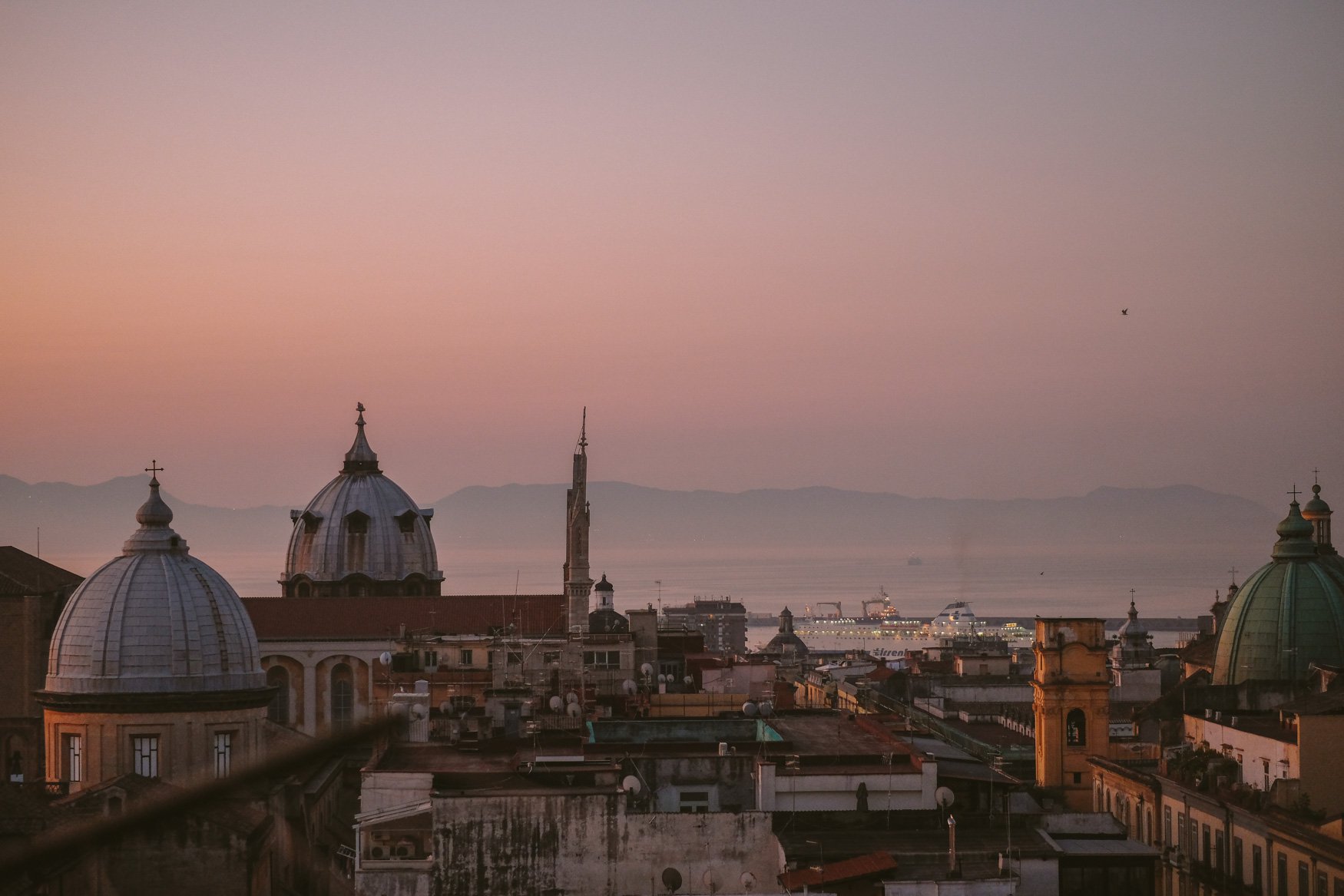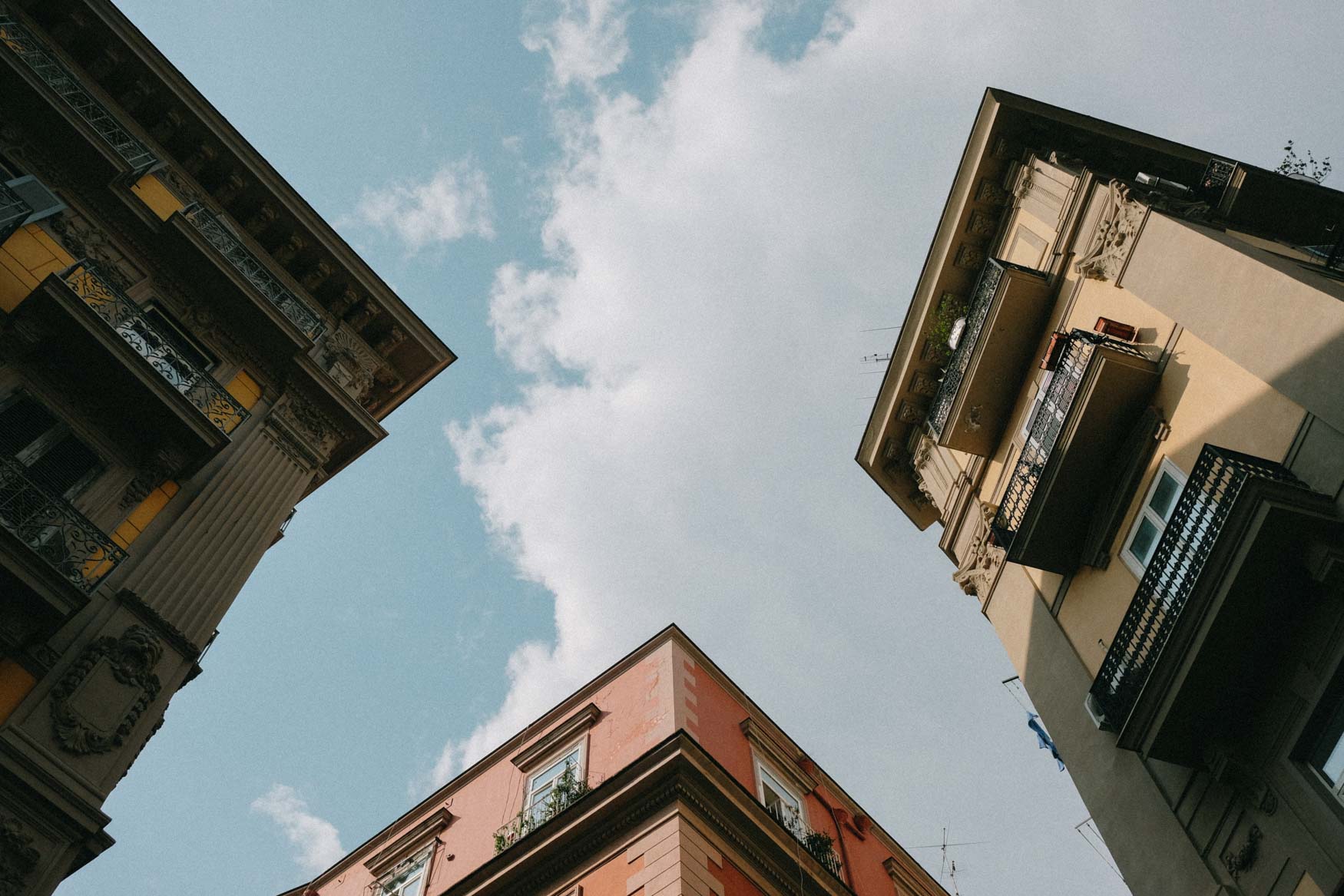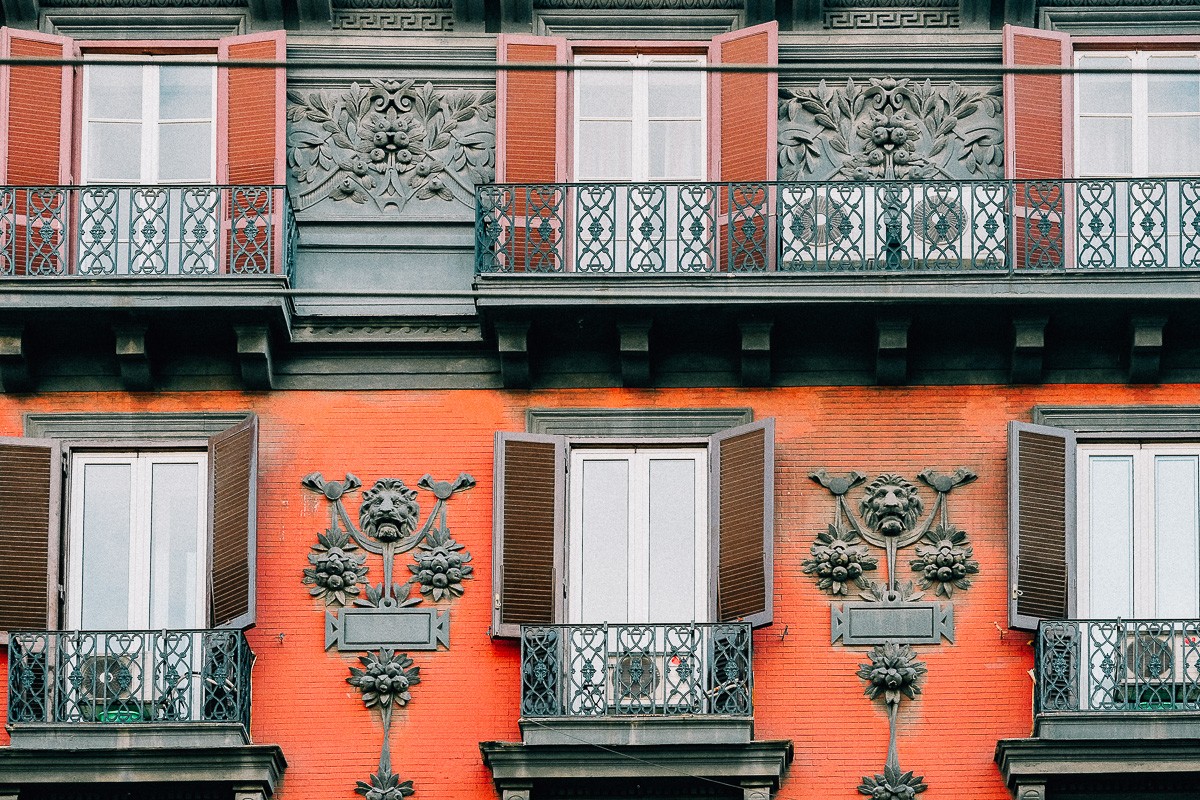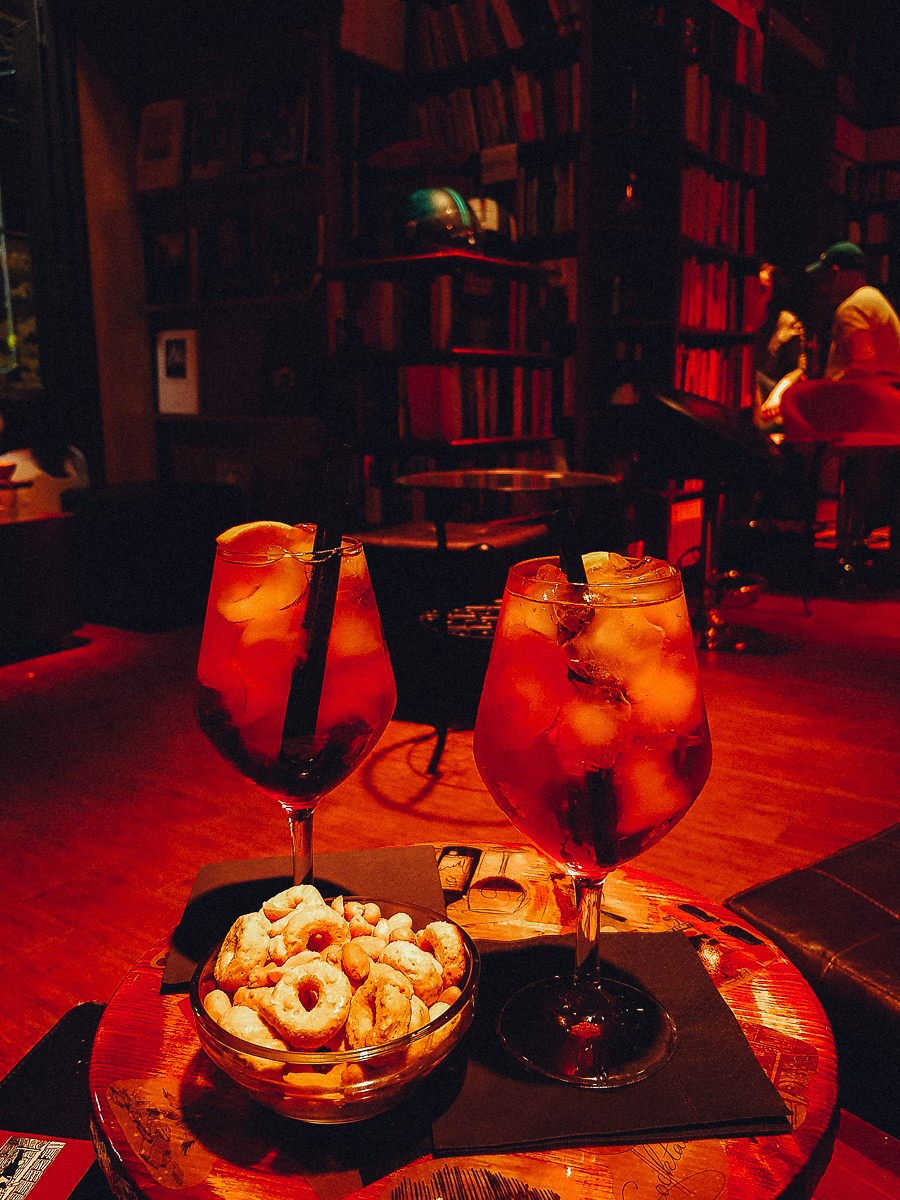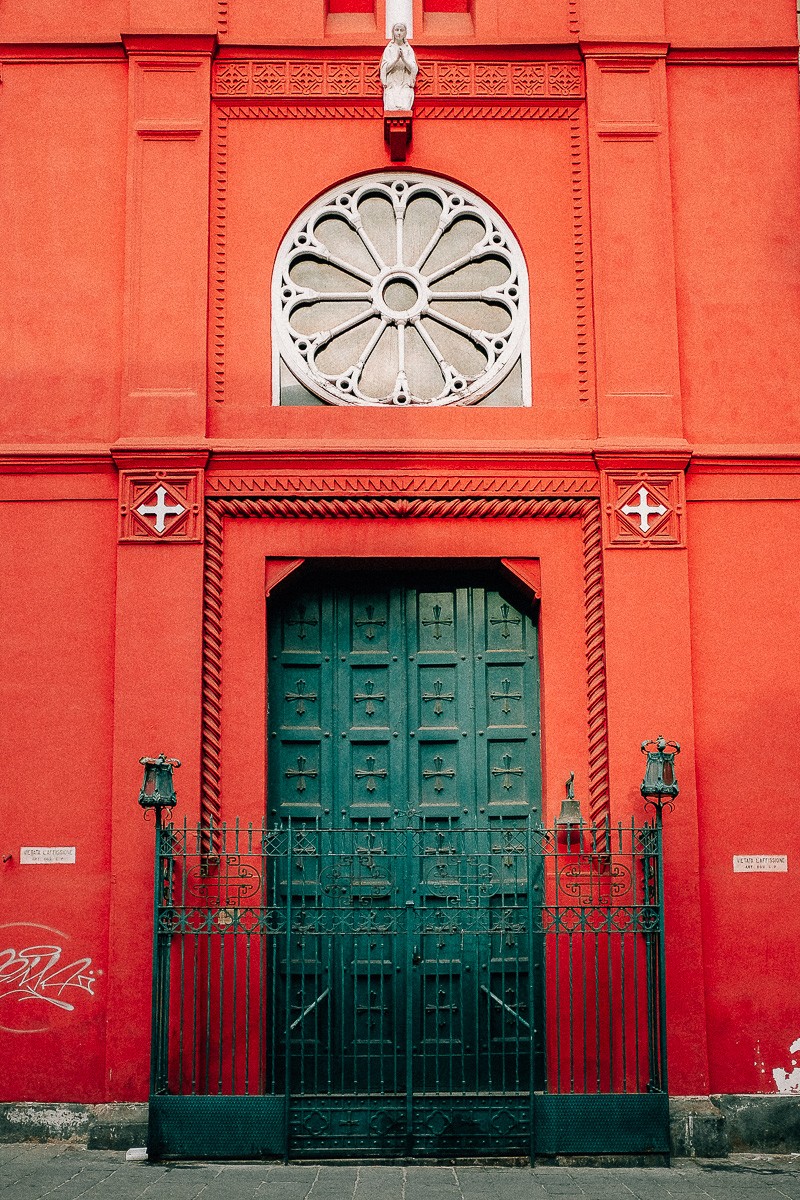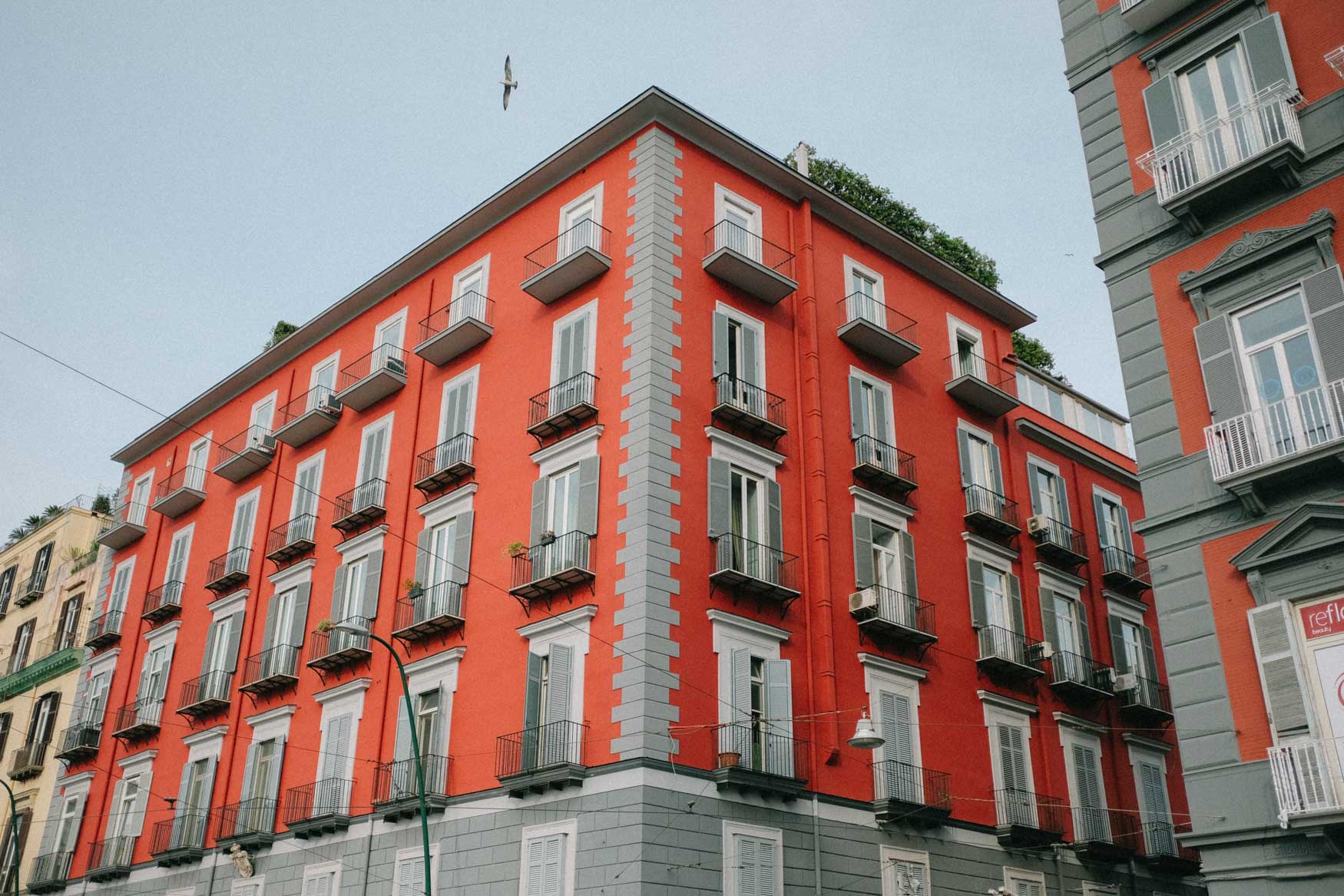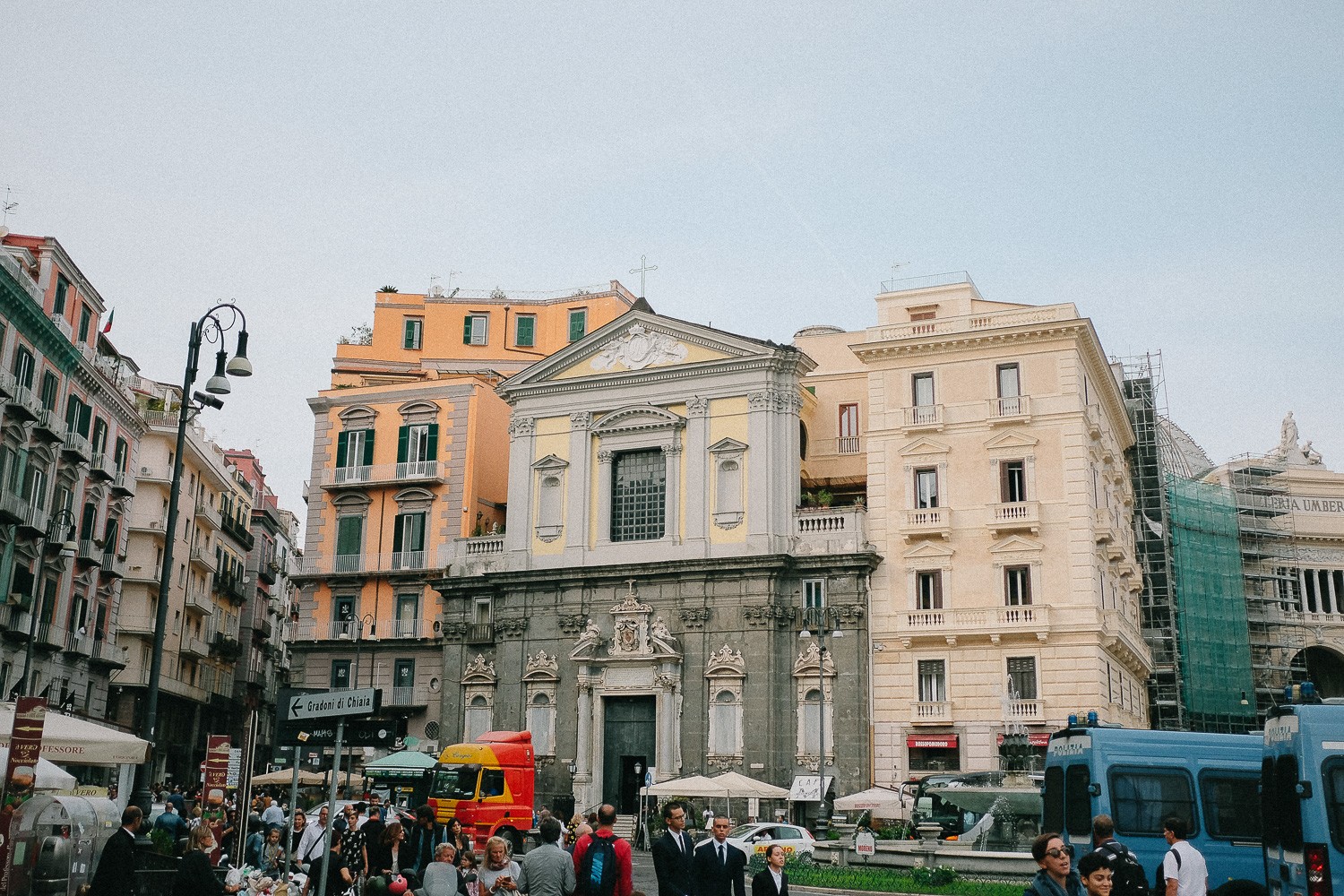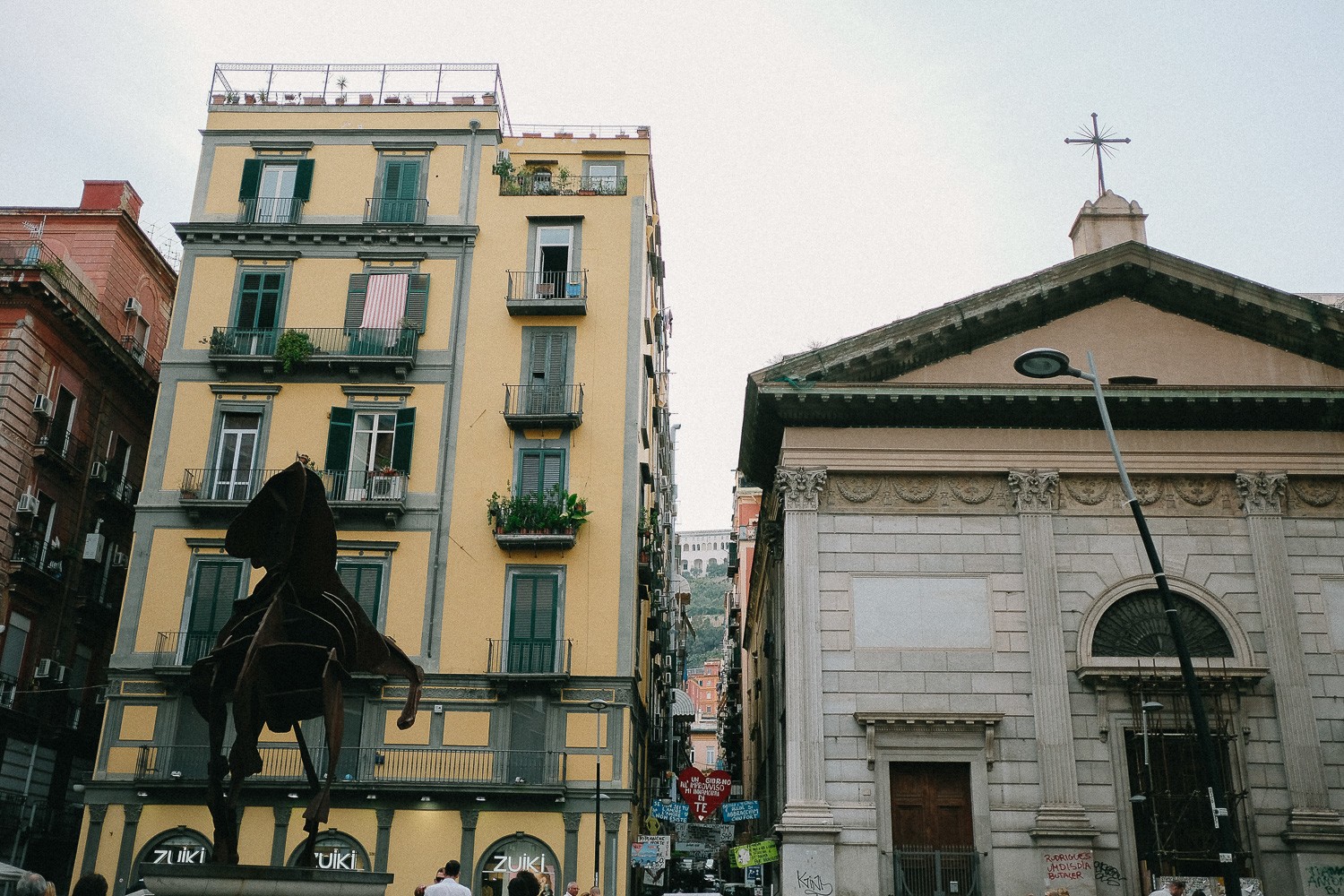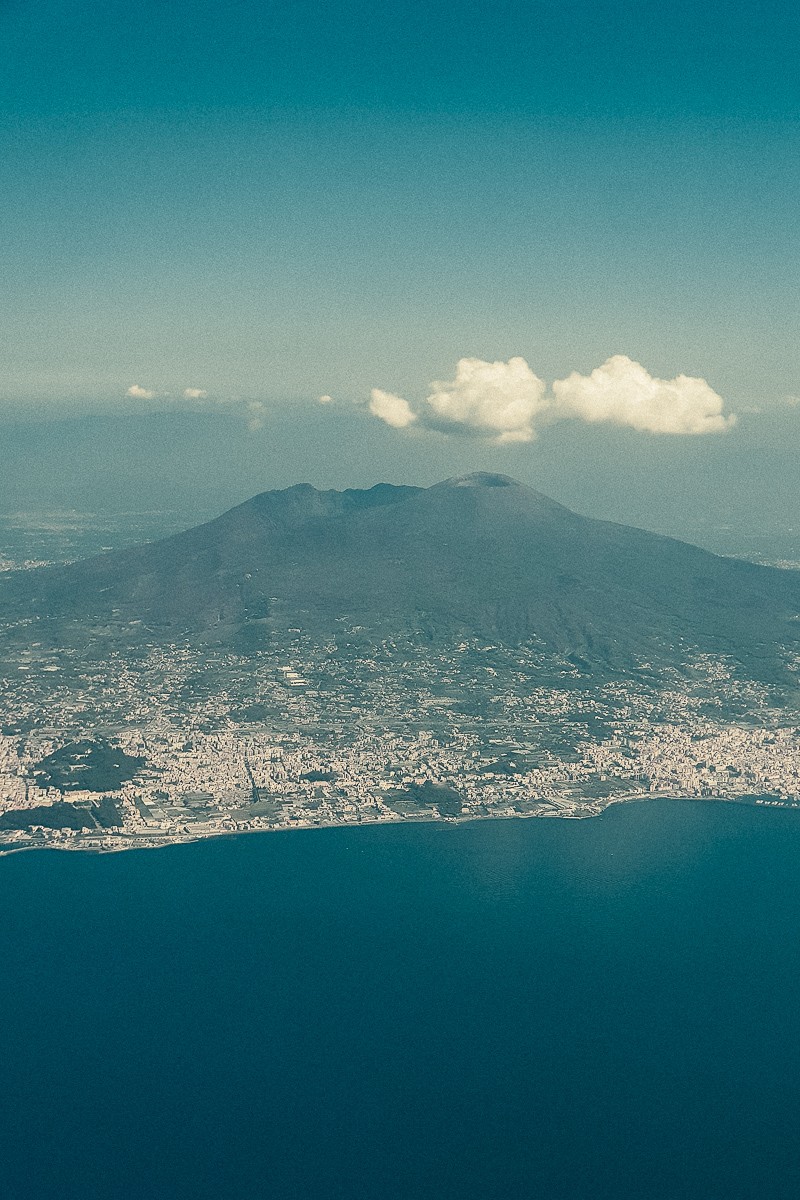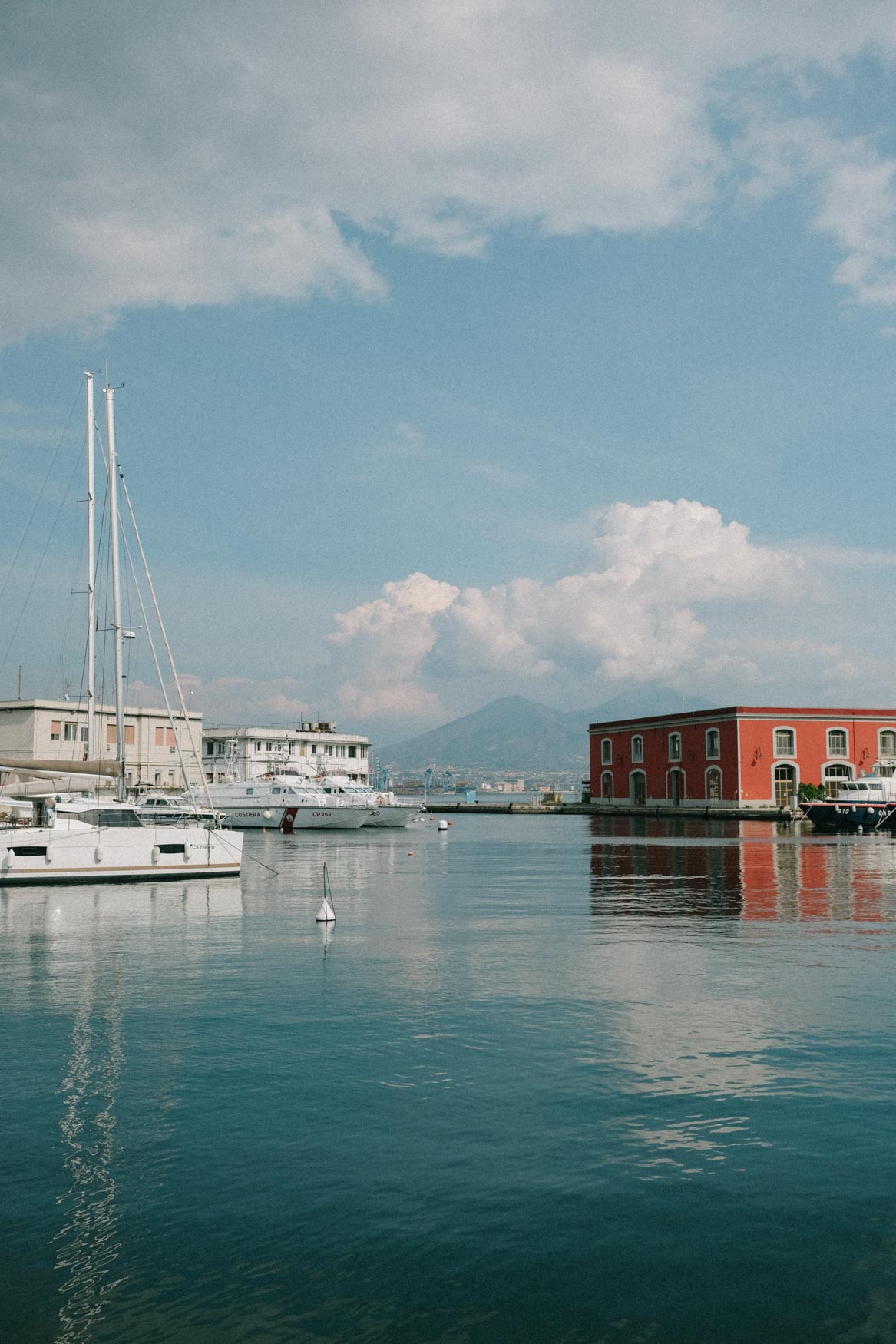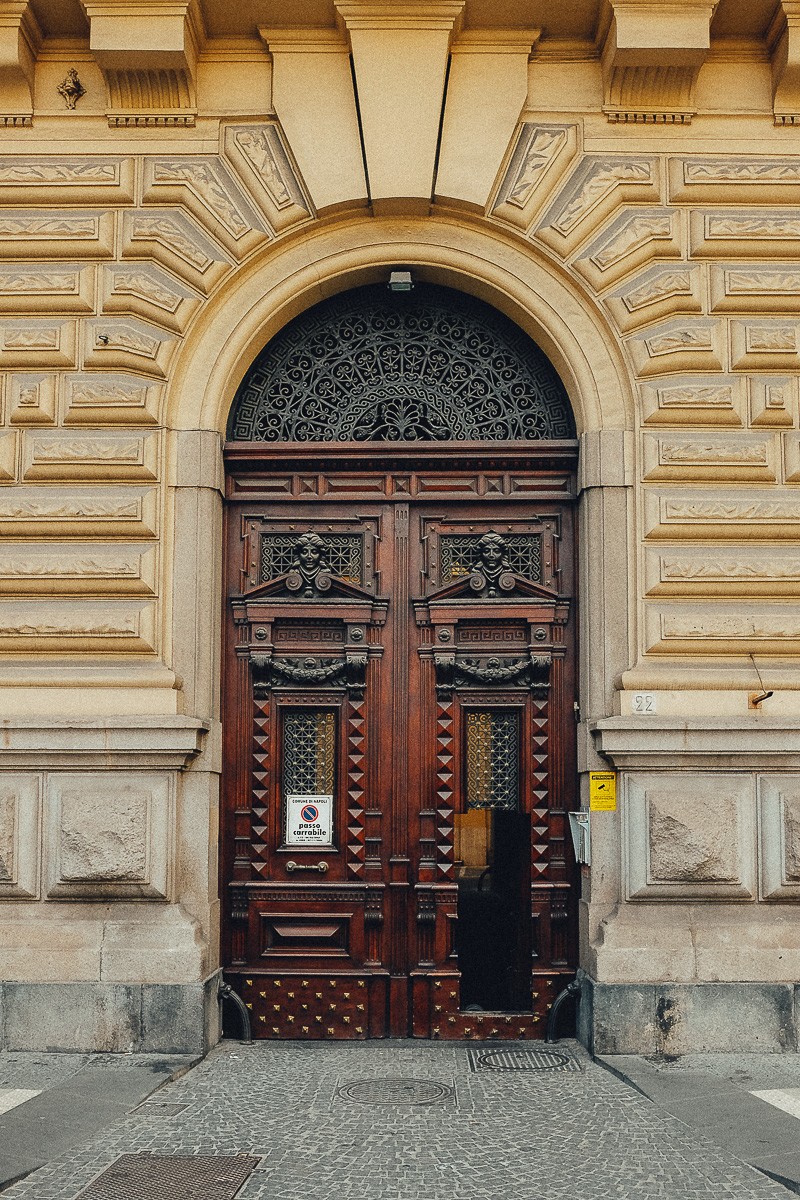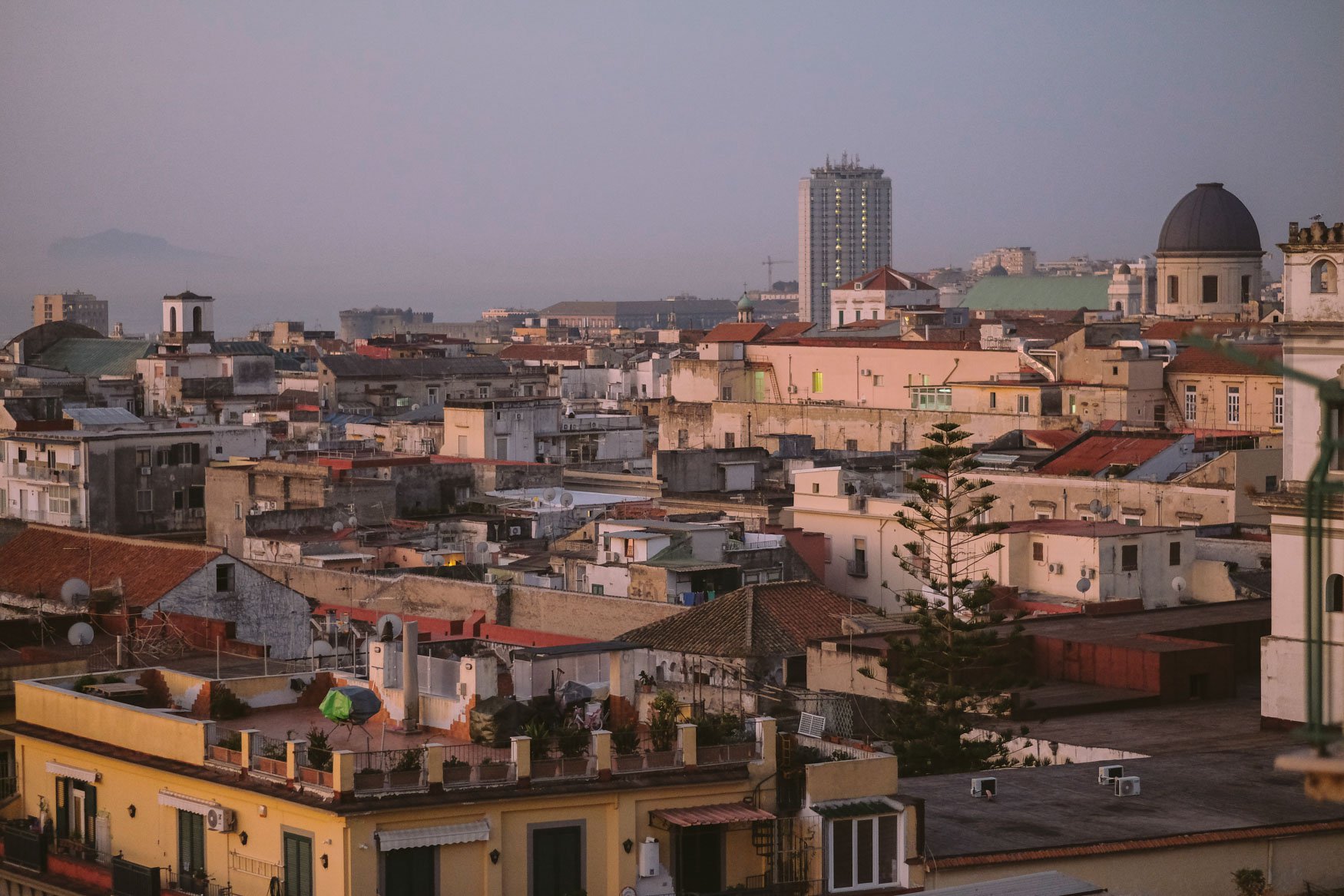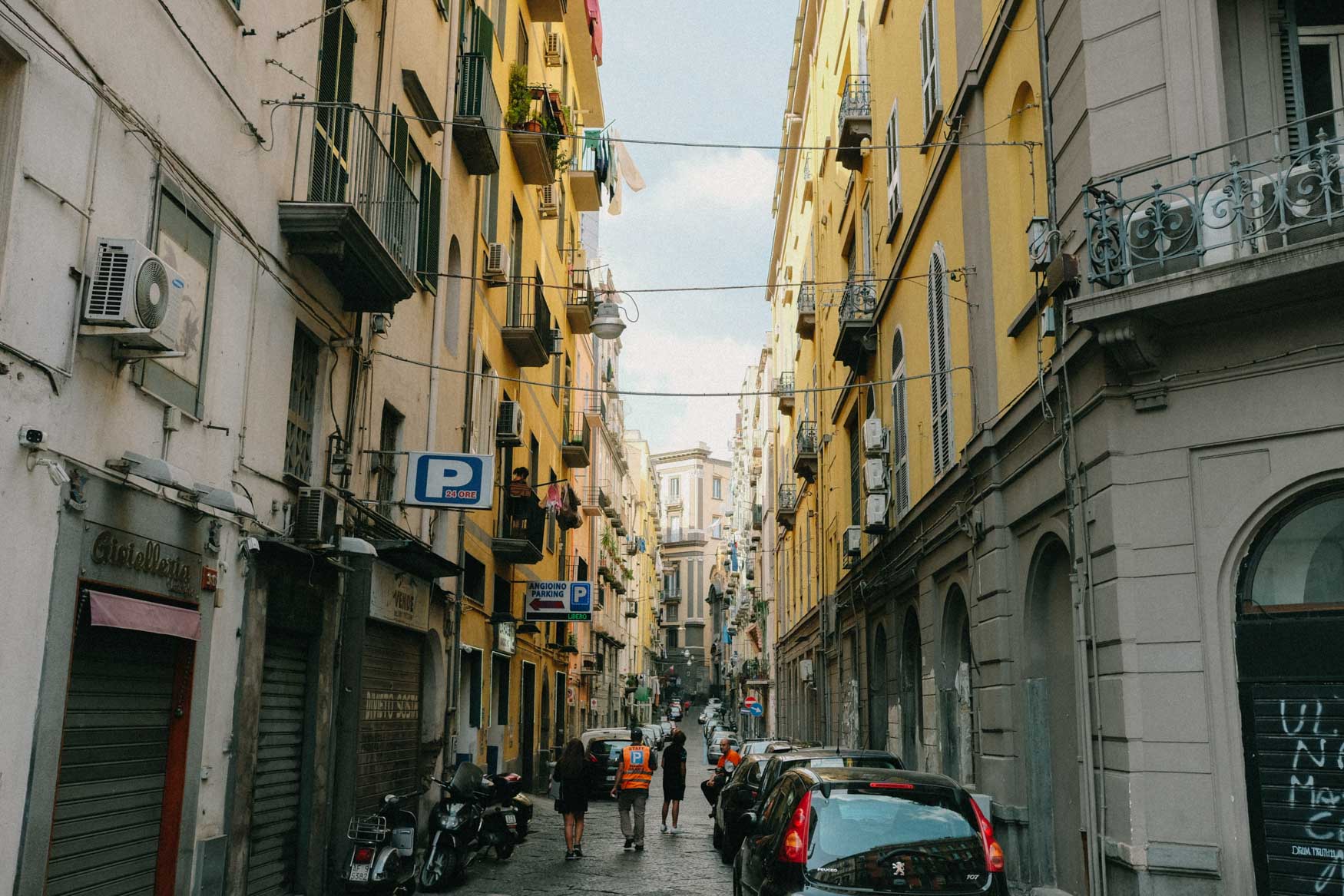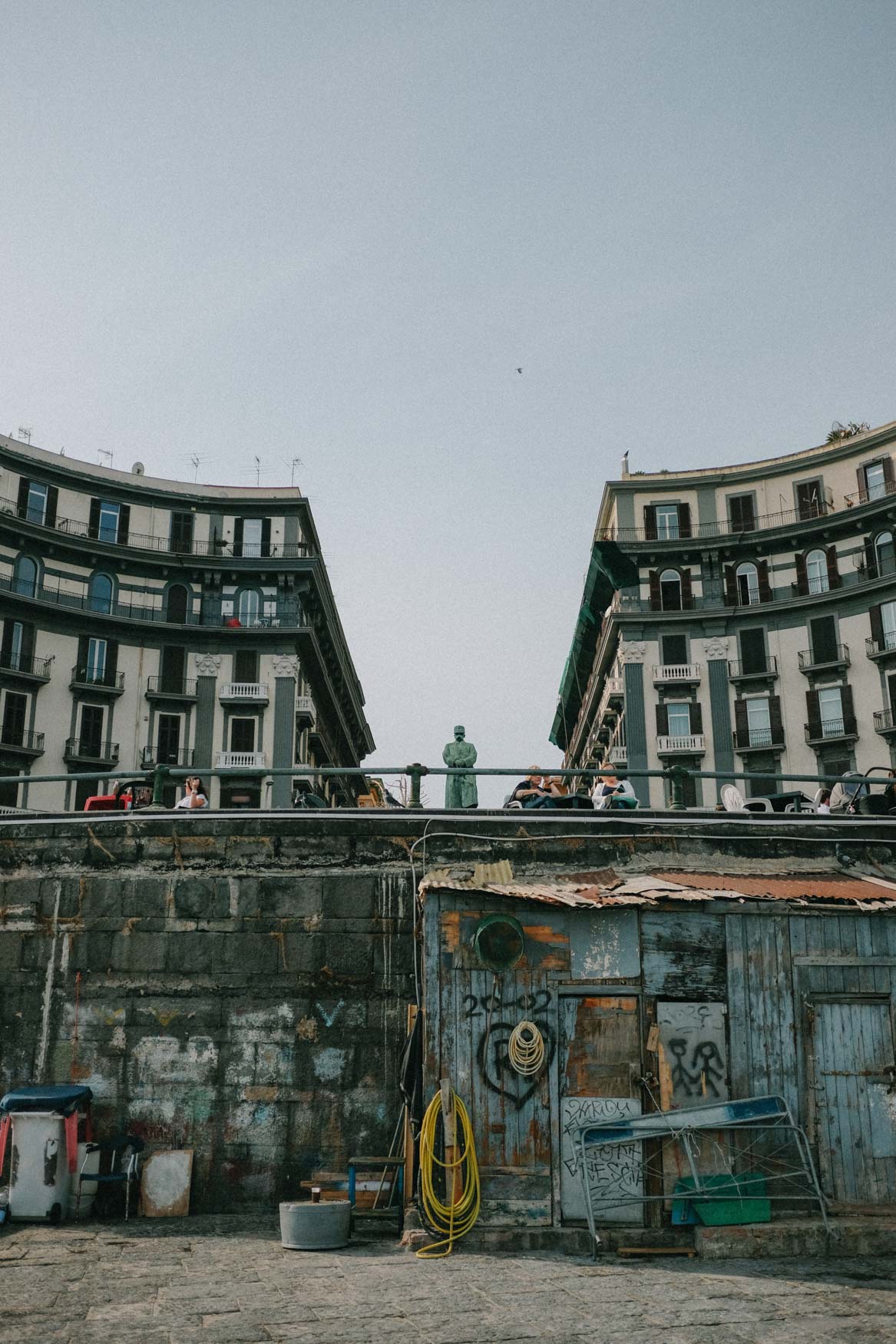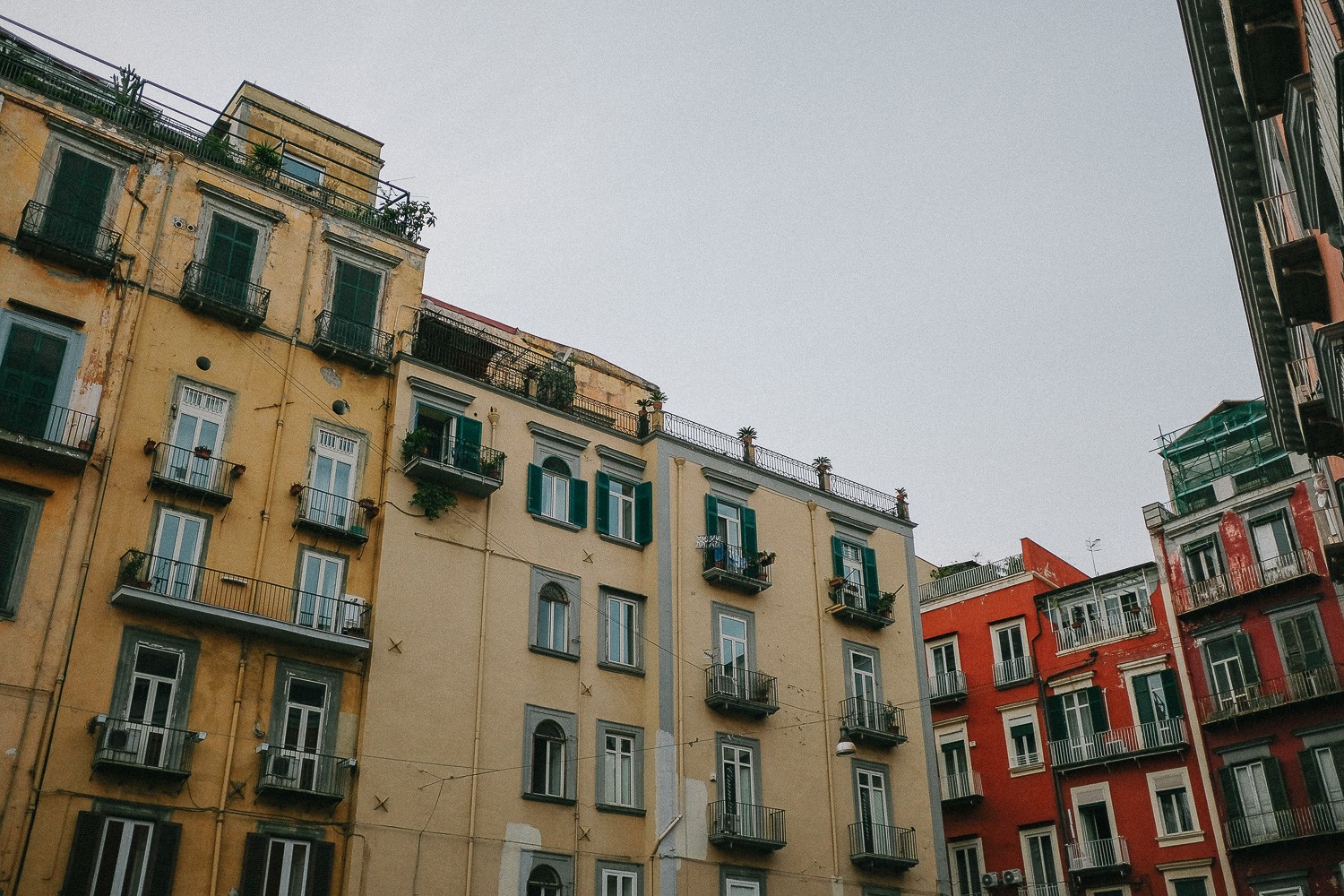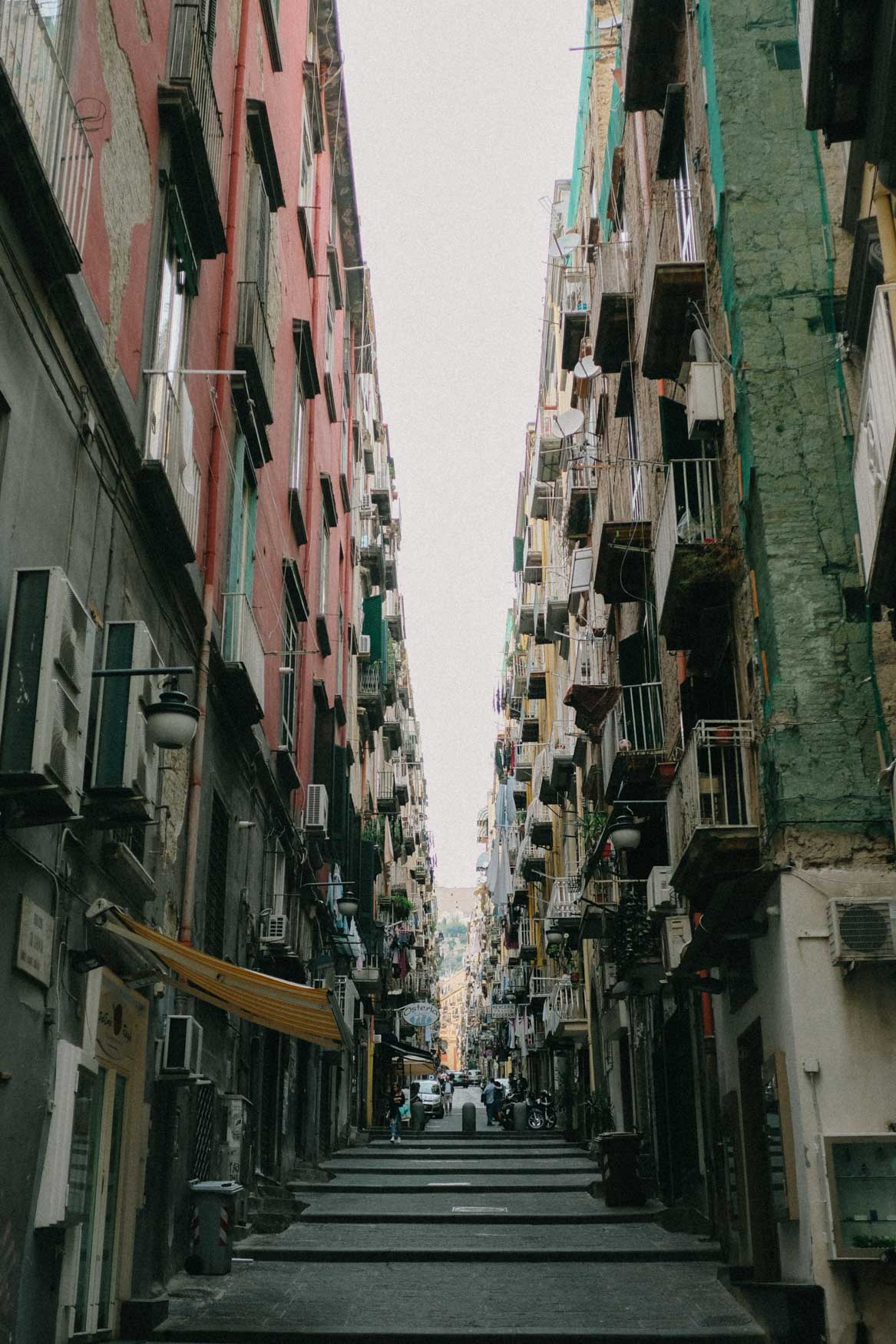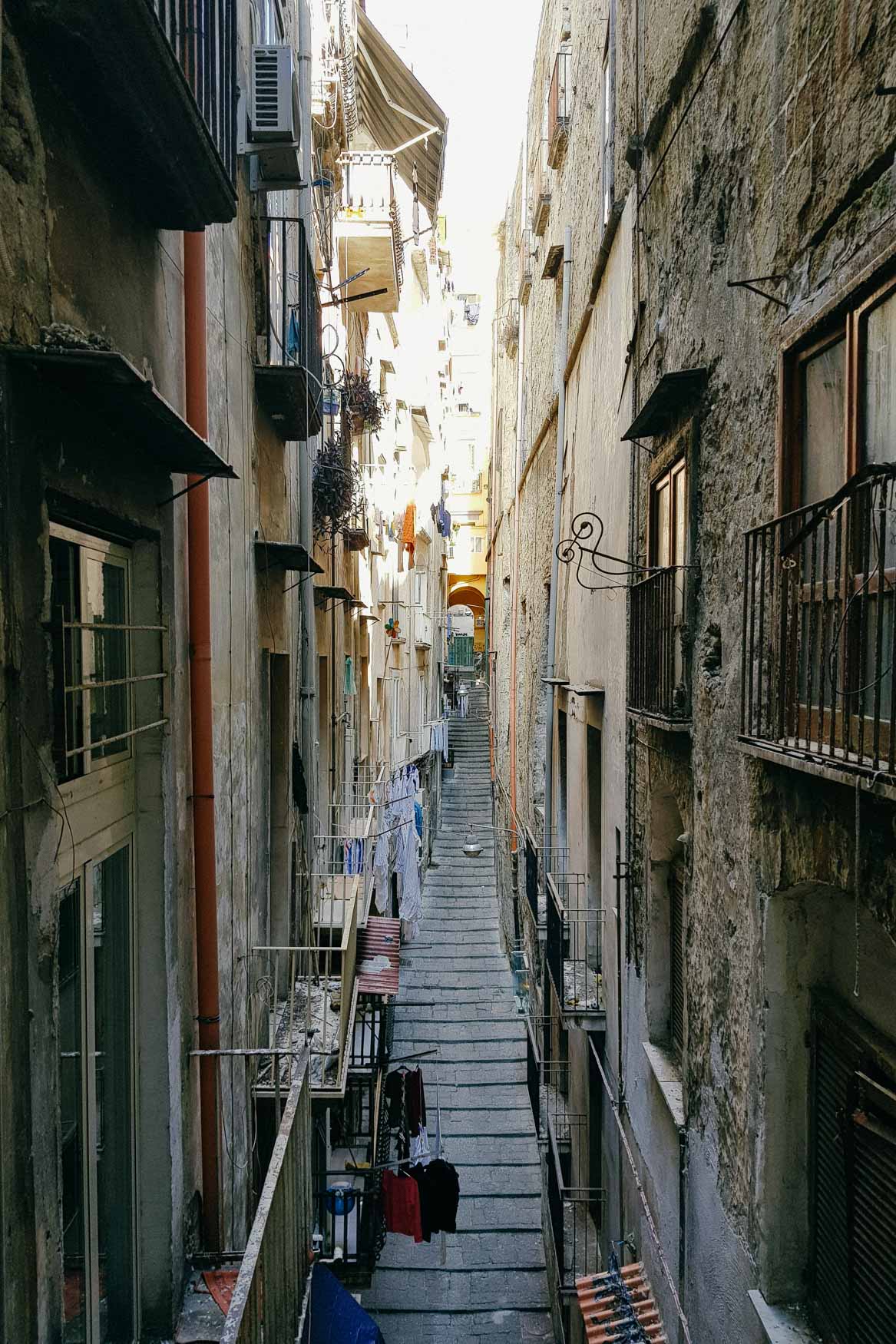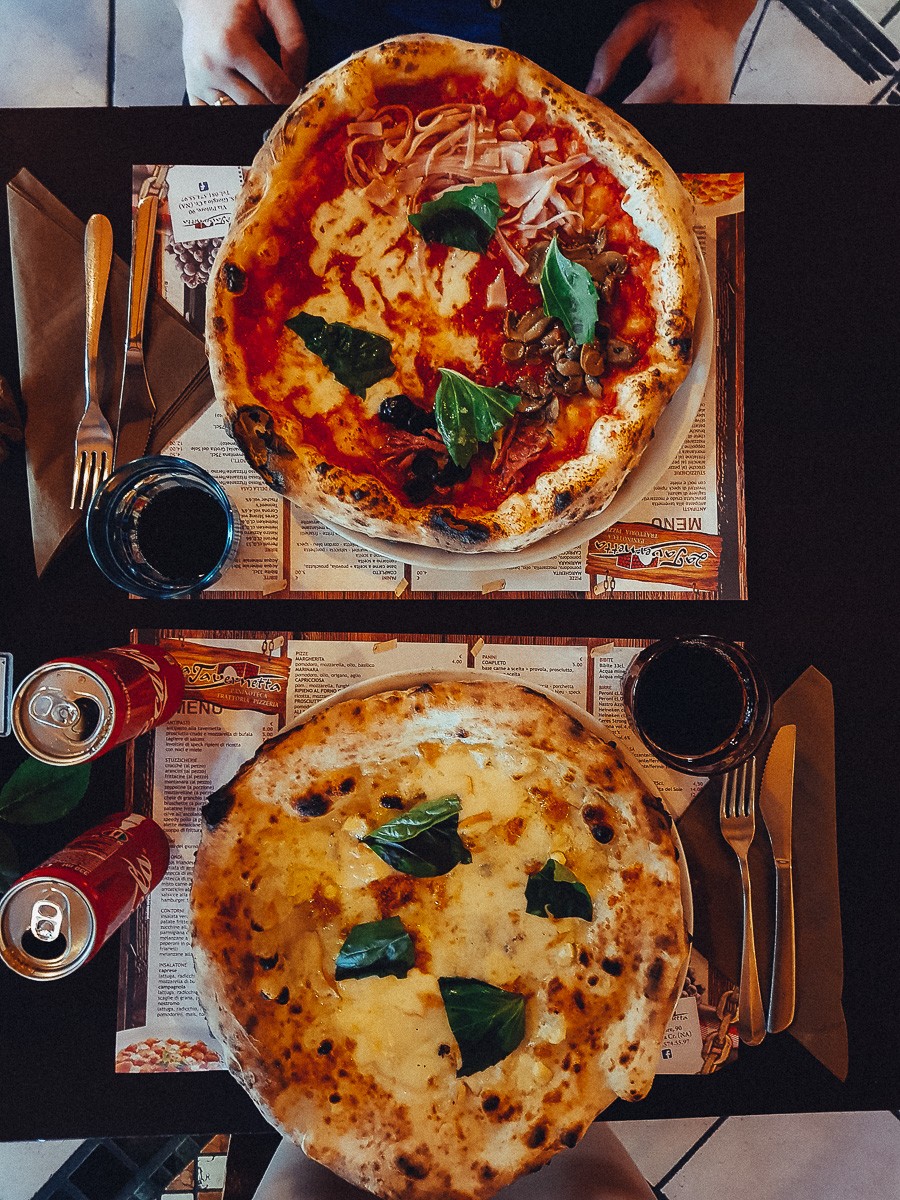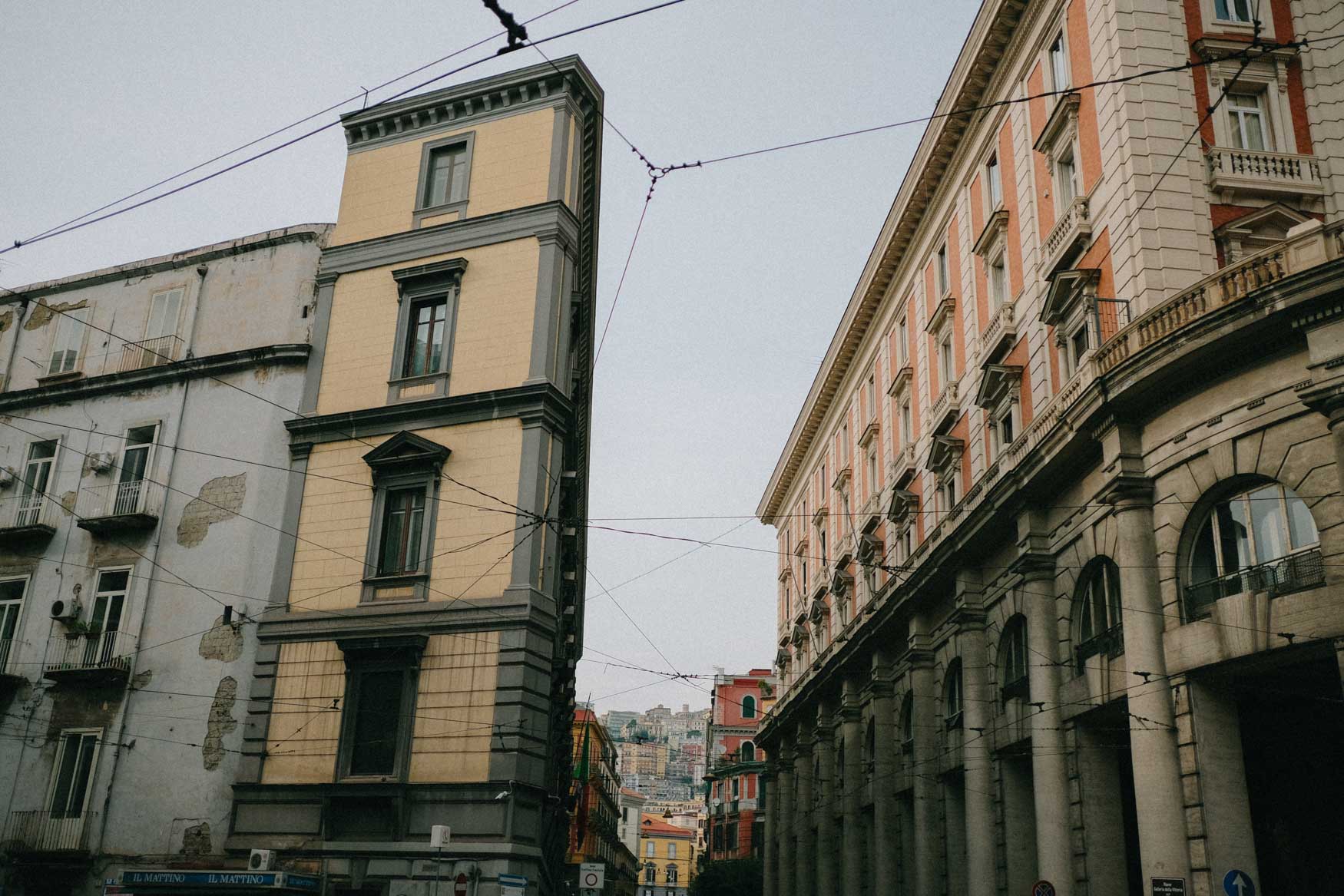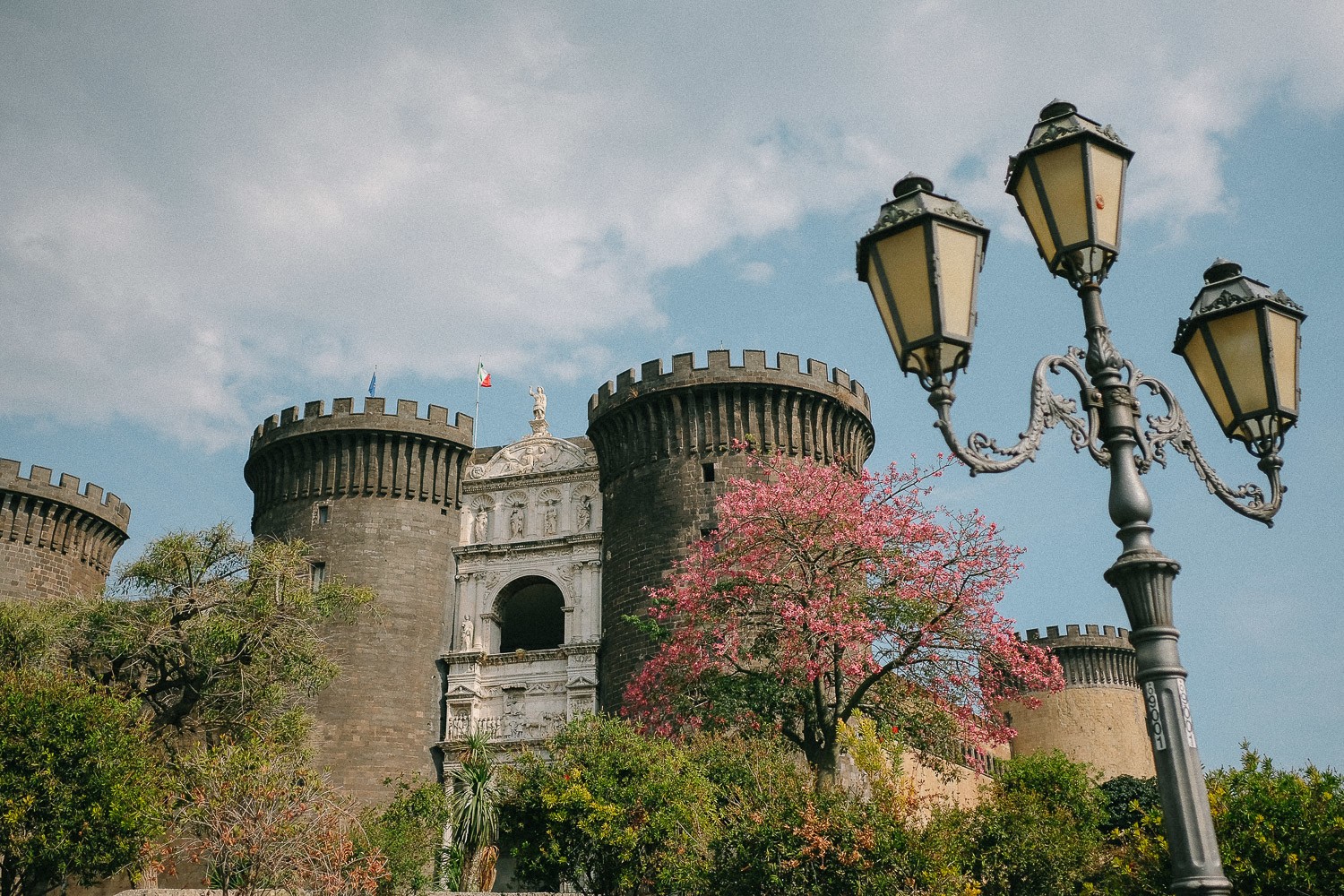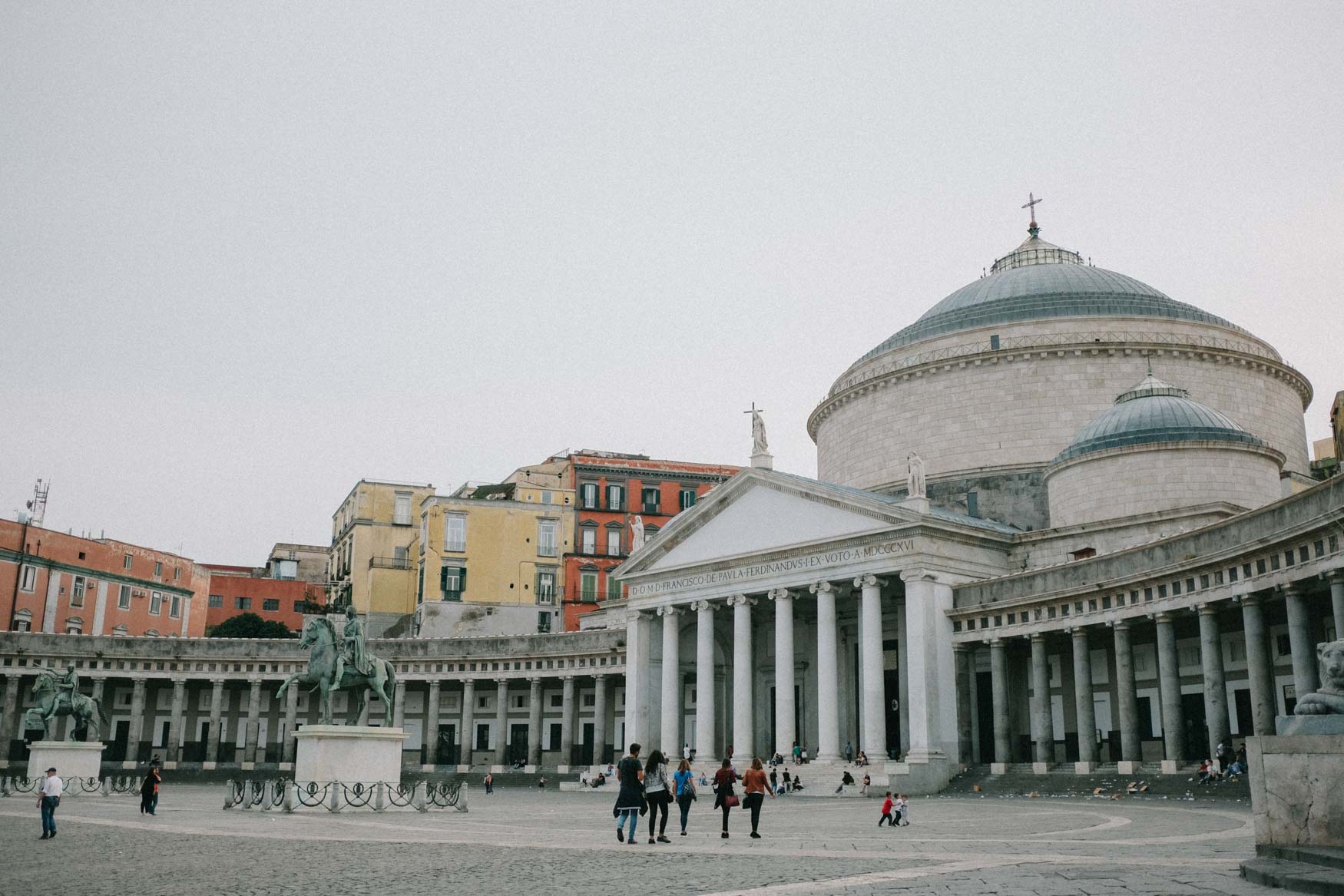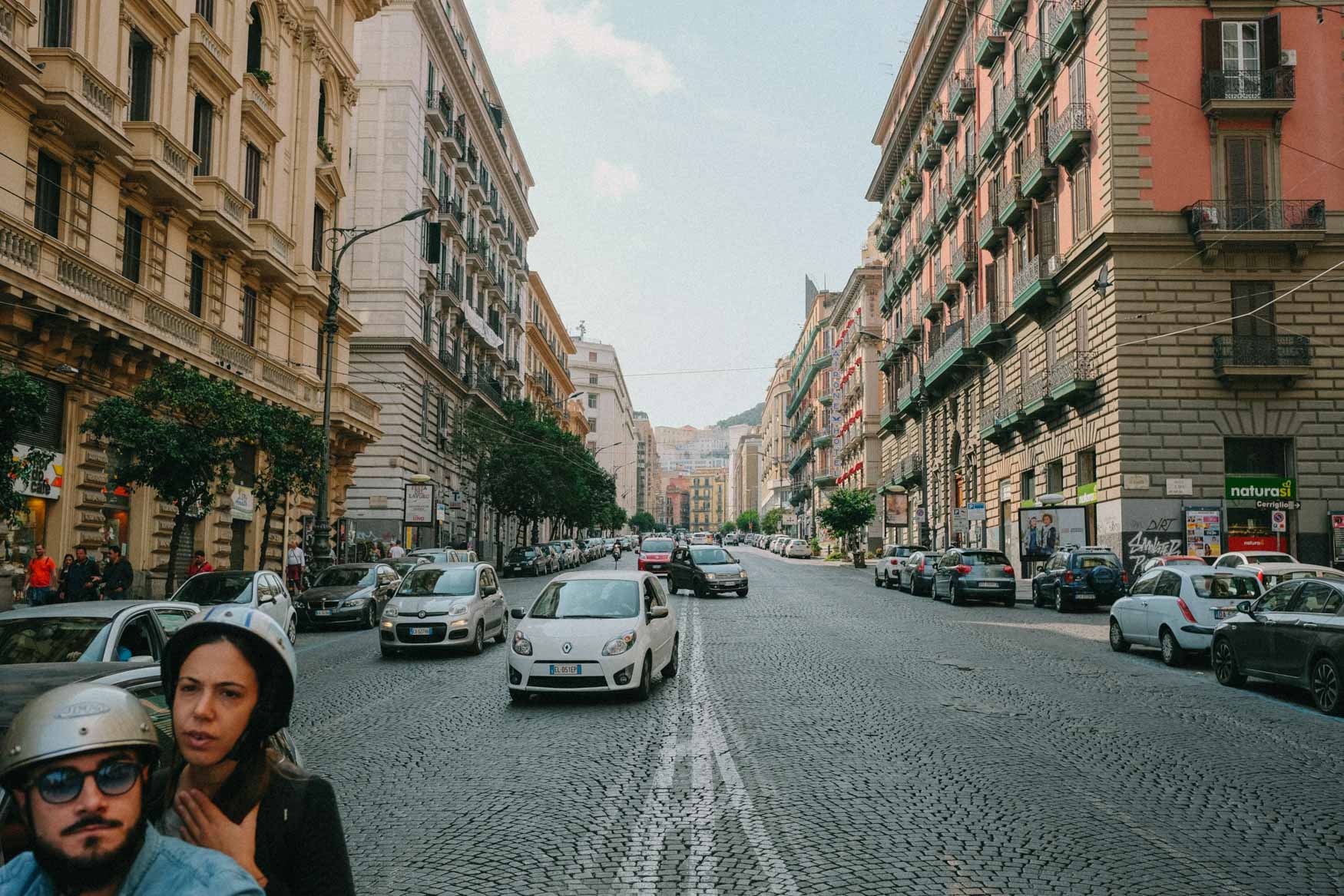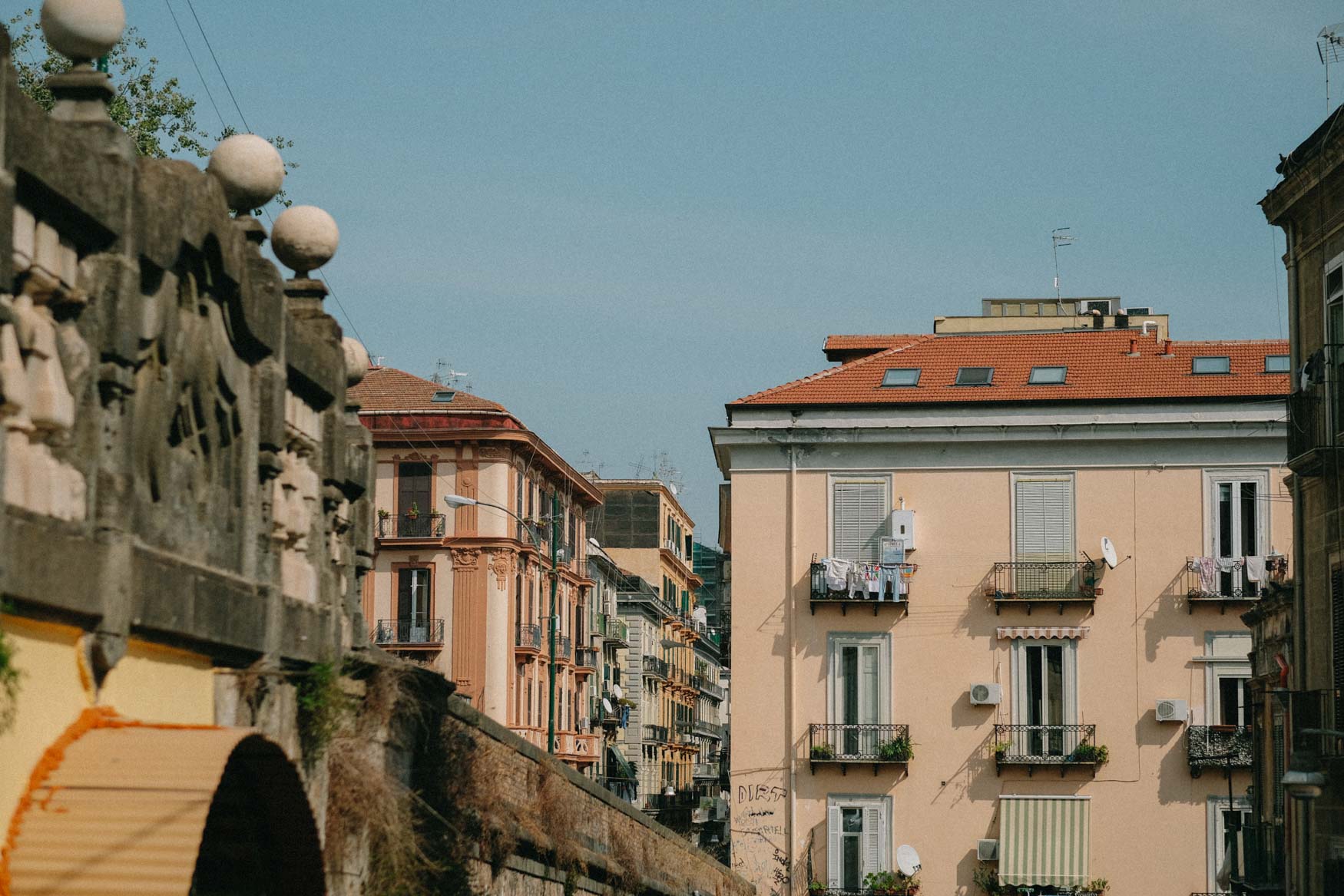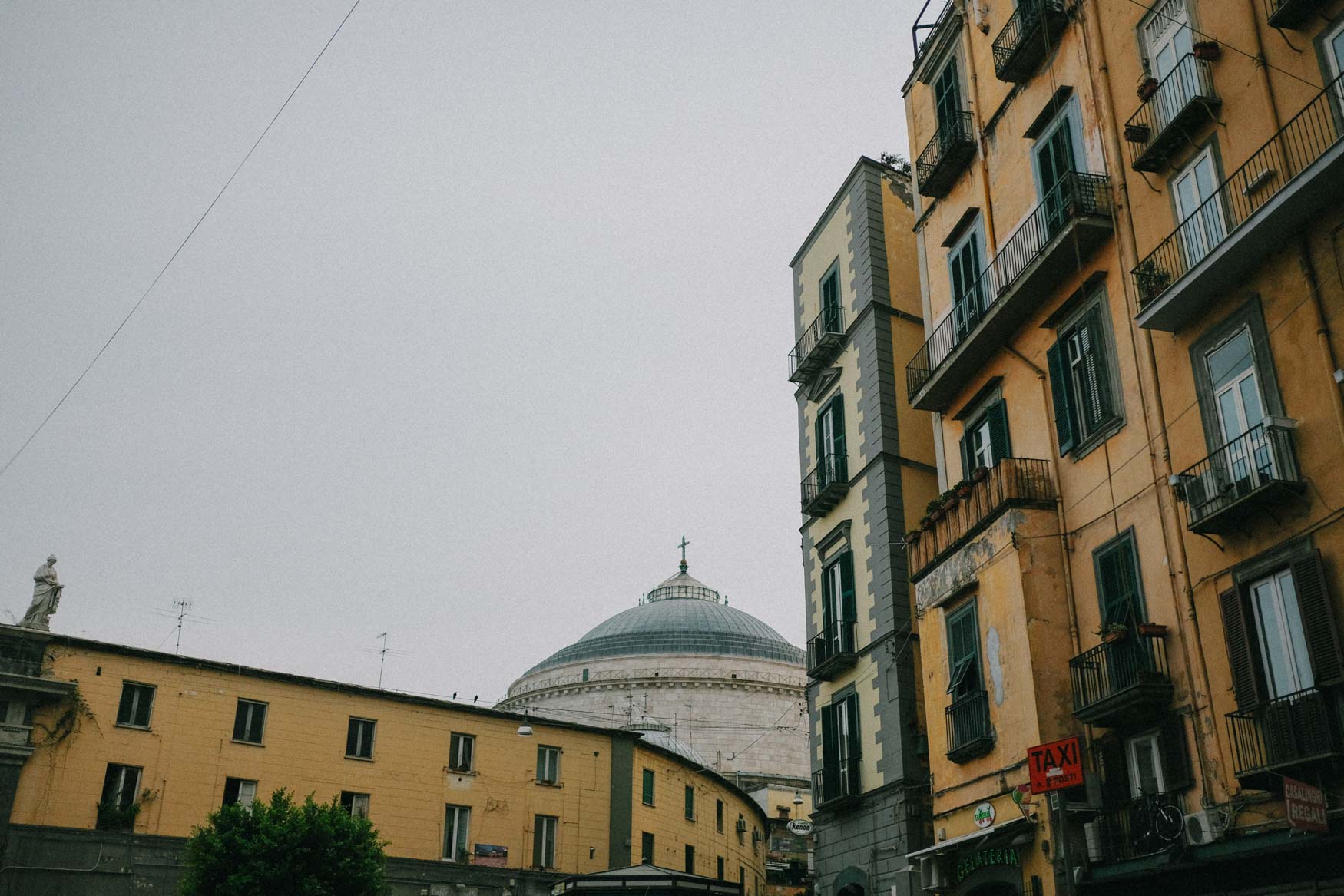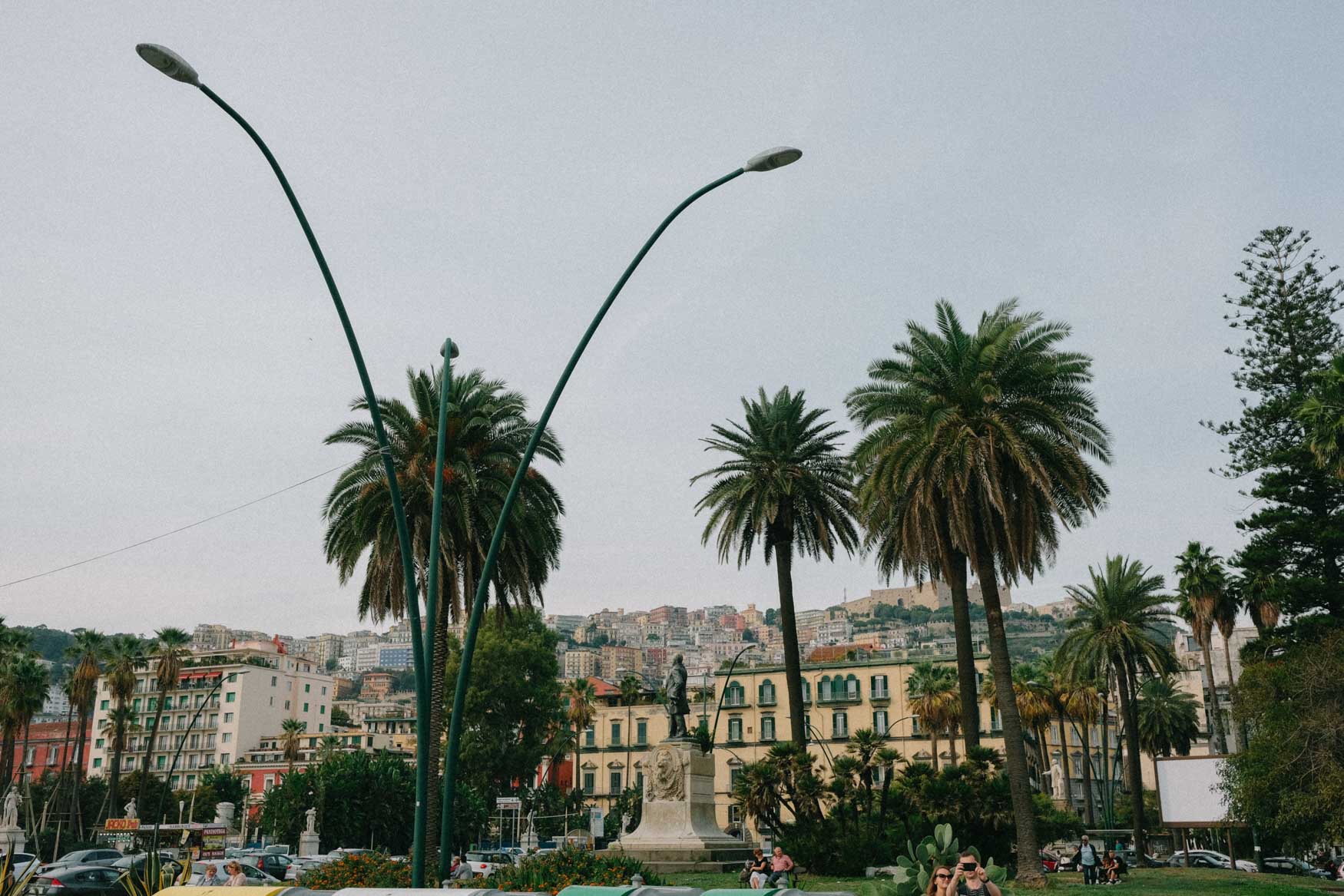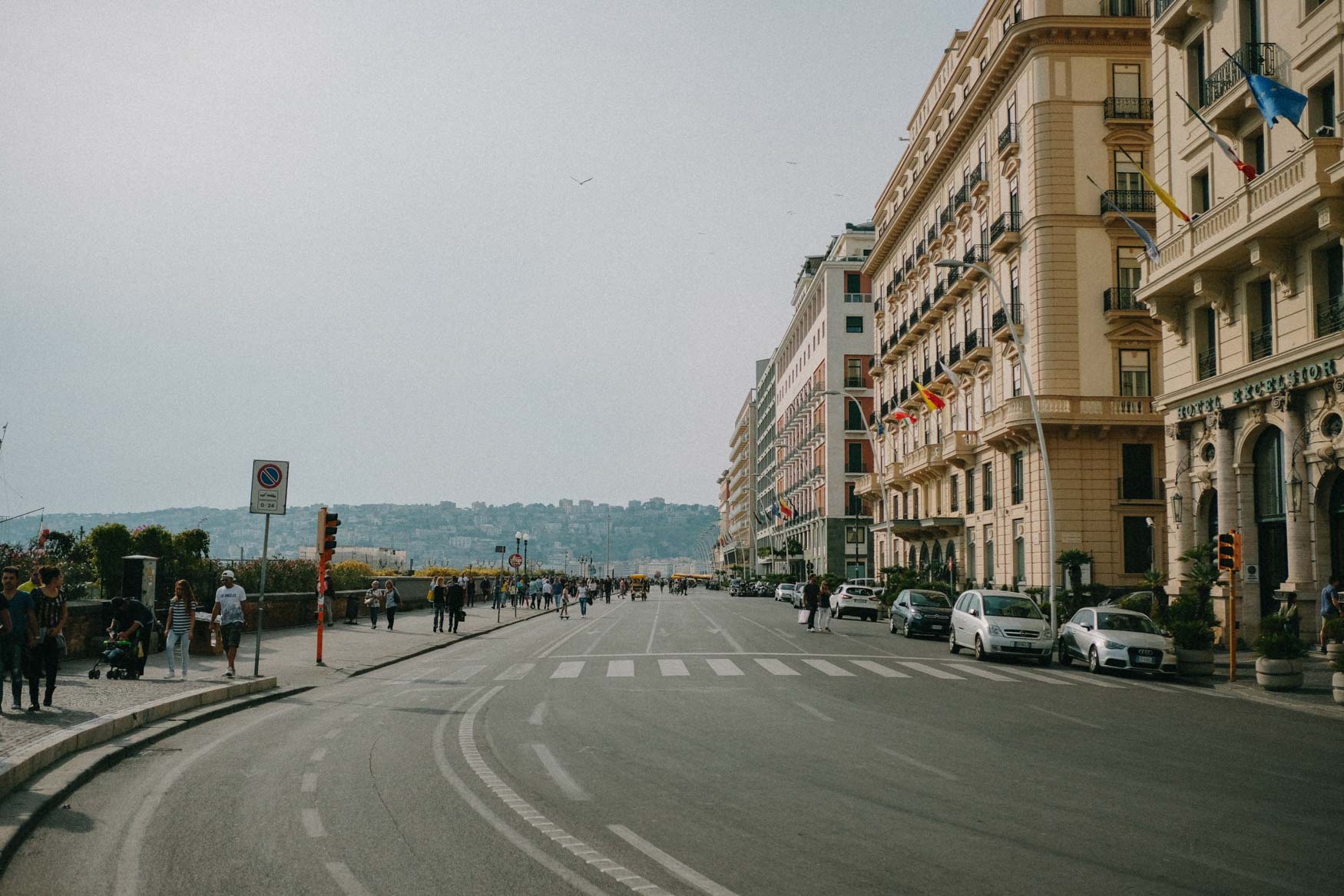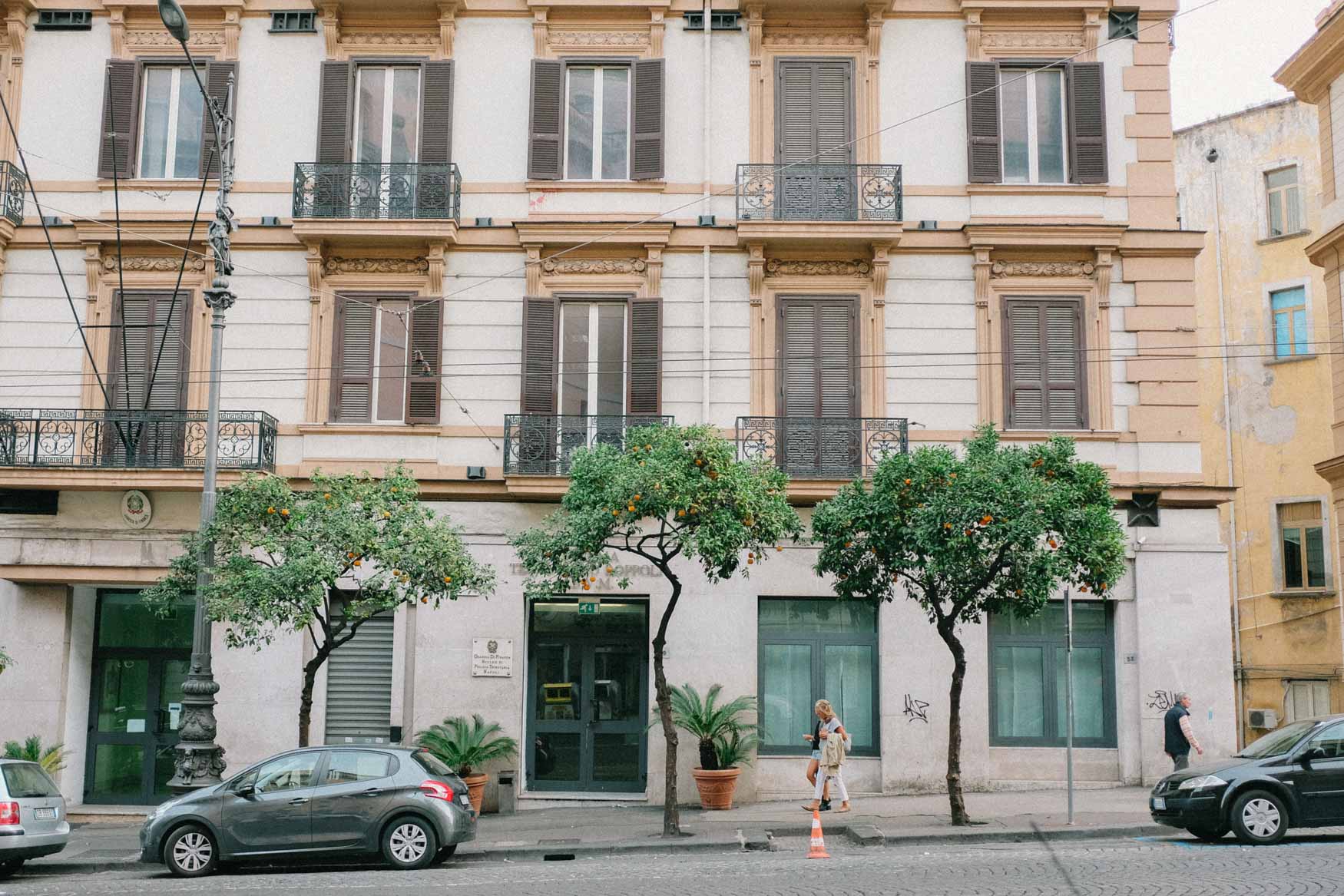Naples (lit. – a new city, Lat. Neapolis, It. Napoli, Neap. Napule) is a unique city! Every Italian will tell you about it. Mentioning Naples, an Italian will smile and his eyes will light up. The majority will tell you that Naples is the most Italian of all the Italian cities. Noise piercing silence, beautiful monuments, teeming life, mortal danger coming from the volcano Vesuvius (It. Vesuvio) – all this is about contradictory Naples!
Here you can read about our impressions of an independent trip to Naples, interesting facts about the city and its inhabitants. You will also learn tips and lifehacks for planning leisure activities and get inspired by the city’s atmosphere through a photo guide! To make your search of important locations simpler, all the names are presented with direct links to Google maps. Official sites and other helpful sites are also embedded for more information. For those wishing to delve into the facts, learn the history, and understand the names, the travel blog is written with links to Wikipedia.
I dare say that when we imagine Italy, most likely a Neapolitan picture pops up before our eyes. It is always a noisy and a little shabby, bustling city by the sea, with motor scooters roaring along the narrow streets of 300-year-old houses with crumbling plaster and linen always drying on the clothesline. People living in these houses are very emotional: loud mothers of large families, their husbands, and children from small to large who love playing football among concrete walls, dead ends, cars, monuments, etc.
Naples is the third-largest city in Italy after Rome and Milan. The main thing that distinguishes it from other Italian towns is that Naples has its own picturesque and radically different life outside its tourist streets. It is easy to see the bright and original life of Naples. The only thing you need for it is to turn into one of the lanes. Here you will find yourself in the hot embrace of the true city!
Walking along the streets of the city, you will notice red everywhere! It is particularly common for red pepper pods, which can be explained easily. According to a long-standing Neapolitan tradition, the horn is a symbol of prosperity, and red is one of the city’s symbols. Previously, inhabitants of Naples used to love hanging red horns in their houses or carry them everywhere. Now they are replaced with red hot pepper, which you can see wherever you look!
Naples is considered to be the birthplace of pizza, which conquered the world, stood up to McDonald’s, sushi, and other gastro devourers! The oldest pizzerias date back to 1730. The signature pizza is Margarita.
Here people speak in the Neapolitan dialect. The famous actress Sophia Loren, the playwright Eduardo De Filippo, the composer Leoncavallo (It. Ruggero Leoncavallo), the singer Enrico Caruso, the comedian Toto and other prominent people grew up here.
According to the nature of the Neapolitans, they hope for a miracle in their lives most of all. They do not start any important small events without a prayer to their saints. Presepe (It. presepe), i.e. scenes of the birth of Jesus Christ, is made here in Naples. All of them are handmade locally. Presepe or nativity scene is a classical sculpture for many Catholic countries. But it was here in Naples that presepe making became an industry! The center of this industry is located in a big, beautiful historical quarter around the church San Gregorio Armeno. The making of sacred figurines dates back to antiquity. Neapolitan presepes are believed to be the most valuable in the whole of Italy, though here they can be found in every home. Souvenir shops offer figurines of various themes, not only biblical ones. The workshop of Giuseppe and Marco Ferrigno was founded in 1836. It is one of the oldest existing workshops in Naples. All presepes are made using traditional technologies and only by hand. The clay figurines are skillfully made by men. Women sew outfits for dolls and then they paint the figures together. Children start helping from the age of four.
The legend of the city
As Homer wrote, Naples was founded on the place where the siren Parthenope’s (It. Partenope) body was carried by waves. She threw herself into the sea when Odysseus safely passed the cliffs, not tempted by her singing. The Roman myth tells another version, in which the centaur Vesuvius was in love with Parthenope. Out of jealousy, Zeus turned the centaur into a volcano and Parthenope into the city of Naples. Thus, Vesuvius’ anger has been felt infrequent eruptions of the volcano up till now.
On criminal activity in the city
Naples is a city with high criminal activity. It is ruled by the mafia, named the Camorra. According to the statistics, 30% of the population has a criminal record. The Camorra, in its turn, appropriates a portion of the income of the people committing crimes. The Camorra is not an organization against the state. They commit crimes only with the purpose of enrichment. No one can say for sure how and when the Camorra appeared. Some sources claim that it happened in the 16th century and was connected with the secret society of the Spaniards who were occupying the territory of Campania. According to another version, the Camorra was formed from small criminal groups operating in poor quarters of Naples at the end of the 17th century. This word was officially used for the first time in 1735.
There are several citadels of crime in Naples: the Spanish Quarter (It. Quartieri Spagnoli), the Pallonetto district, the San Giovanni district, and Scampia. Spanish troops quartered in this district in the 15th century, and nowadays, the city’s poor live here. About 20% of the young Camorrists can neither read nor write. Poverty is the key to the whole problem. The Camorra controls all illegal activities on Naples’s territory and obliges its members to pay tribute to the clan. The thief who has committed a theft must make a gift to the clan, and a bandit is also obliged to make a gift to the clan. Thus, each criminal in the area must pay the clan a quota from his profits. For example, they don’t even extort money from a restaurant. There is so much that the Camorra can give or cover. In some areas of the city, even water bottles cannot be sold without the Camorra’s permission.
“Here, any sign of a city in the European sense of the word completely disappears. Streets turn into narrow passages between high walls of houses, change into staircases, dead ends, and courtyard. They all cause some confusion that can be understood only by the aborigines who have been inhabiting them from generation to generation.” This is what they wrote about the Spanish Quarter back in the 19th century. Amazingly, nothing has changed in the 21st century. And the main thing is that poverty has still been flourishing here.
Gastronomy
As it has been mentioned above, Naples is the birthplace of pizza! The best pizza in the world is named Neapolitan after it. A whole food culture lives on the city’s streets, which is impossible to pass indifferently.
Let’s dive together into the flavors of local pastries. The first stop is at the traditional Italian pastry shop Scaturchio (Piazza S. Domenico Maggiore 19), which opened in 1905. You can see and taste an original cake reminiscent of the Vesuvius volcano with a smoking crater! There are also many different treats here, though I would recommend you trying Sfogliatella. In its literal sense, Sfogliatella means layers of a thin sheet, which indeed it is with ricotta cheese, semolina, and fruit inside. It is a delicious combination. I strongly recommend it! Another very delicious Sicilian cake is Cannoli (“a small straw”).
The next tasting is the original fried Neapolitan pizza. The first Neapolitan pizza used to be fried. At the very beginning of its history, pizza was fried, not baked in the oven. At that time, it was the food of peasants who sold pizza to the Neapolitans, and they ate it on the go. It differs significantly from the baked one. Try it, and you will feel the difference!
The oldest pizzeria in Naples is Antica Pizzeria Port’Alba dating back to 1738 (Via Port’Alba 18). Here, you should eat pizza in the following way: fold it in half, then fold into another half, open the top of the paper and eat you may eat your pizza. Locals describe their folding technique as follows: “Close, fold and open, bon appetit!” Make sure to take a classic Margarita pizza. Local chefs invented it in the 19th century in honor of Queen Margherita di Savoia’s visit to Naples. If you are attentive, you can notice three colors in the Margarita pizza, i.e. the flag of Italy. Neapolitans say: “Pizza is the very Naples, pizza is heart, pain, history, land, love, and passion!” Why is the taste of pizza made here so significantly different from others, even though the recipe is known to everyone? Experts say that the secret is in its water. You cannot drink Neapolitan water from the tap because it contains sulfur and volcanic substances, but it is the water that makes pizza dough unique!
In confectionery “Capriccio Pasticceria” (Via Carbonara 39) you must try an amazing Baba. There are also the French babas, but Neapolitan ones are special. Baba is a small yeast cake of Slavic origin soaked in rum and sugar syrup. I would not recommend driving after such heady sweetness. French workers brought the baba’s recipe with them. However, local people came up with the idea of soaking the whole bun in rum, rather than dipping it as in the traditional recipe.
Art critics of all eras strove to get to Naples. They had the temptation to neglect the study of the city’s monuments and to immerse themselves in its modern life. The fusion of noise and silence creates a sound background, which is similar to a song. Song of Naples, like the singing of the sirens, is both frightening and bewitching. The lack of living space can be felt here. It started to be scarce in the Middle Ages, as evidenced by the facts of the city. The Royal Shelter for the Poor (It. Real Albergo dei Poveri) of the 16th century looks more like a palace with a monumental facade and is the largest building in Naples. At the time of our visit, unfortunately, the pompous white facade building was empty. What will its fate be now?
In the 17th century, the city had had 450 thousand inhabitants and was the largest in Europe until the plague took away 2/3 of its population. The number of its inhabitants was further reduced by earthquakes and volcanic eruptions. Naples is now the third-largest city in Italy after Rome and Milan.
Castel Nuovo (“a new castle”) is one of the most important city’s sights. The legend says that it was constructed by the famous ancient Roman poet Virgil (lat. Publius Vergilius Marō). They say he did not only write poetry and poems but was also a magician. Virgil hid a crystal egg somewhere in the castle walls. This egg is believed to be the guarantee of the city’s safety even from Vesuvius. Since the Virgil’s time, the castle has been reconstructed several times, however, the egg has never been found. The castle served as a defense against external enemies. Royal corteges solemnly entered the city through its front gate. Alfonso d’Aragona, who ruled in the 15th century, furnished his trips with great fanfare. In other times, the rulers had to hide in the fortress from their people. Kings who failed to earn the favor of their wayward subjects had a hard time. Therefore, they willingly organized all kinds of festivities in the square in front of the Royal Palace (It. Palazzo Reale di Napoli). Here is also a church (It. San Francesco di Paola), erected on the model of the Roman pantheon and colonnade. The square itself (It. Piazza del Plebiscito) was founded in the 17th century by the viceroy of Spain. The largest European theater of the 18th century San Carlo Theater (It. Real Teatro di San Carlo) is next to the church.
Castel Nuovo
Basilica Reale Pontificia San Francesco da Paola
San Lorenzo Maggiore is one of the most beautiful churches in Naples. It was built in the 13th century on the ruins of a Greco-Roman agora and a church of the early period of Christianity. The creators of these tombs seem to have had doubts whether death would be a dream, eternal rest, or the beginning of a new life. And what if the alternative to eternal rest is Naples itself? Even if not all the Neapolitans visit the monastery galleries striving for silence, they are still close by, outside the walls, amid all this city noise.
The Cathedral of St. Januarius (It. San Gennaro) is translated as “to ask for protection” and is the city’s cathedral. The Neapolitans are a very devout people. Three times a year a triumph of religious ecstasy is shown here. It can hardly be found anywhere else, particularly, in Europe. On September 19th, January 16th, the first Saturday in May a huge crowd gathers in the Cathedral of St. Januarius in the early morning. At 8:45 am, the bishop of Naples brings out on public display the blood of Saint Januarius in glass vessels, who lived at the end of the 3rd century CE. Three times a year Saint’s blood takes a liquid form from a solid-state. Scientists have repeatedly tried to study this phenomenon when the blood becomes liquid under the influence of parishioners’ prayers, but the Catholic Church preserves its relic and does not allow science to investigate blood vessels.
It would be wrong to believe that the Neapolitans worship only those saints who once lived here. One of the most popular saints was canonized here 25 years ago. He lived at the beginning of the 20th century and died in 1927. His name was Giuseppe Moscati. The center of his veneration is the Italian Church Gesù Nuovo. Giuseppe Moscati was a physician and became famous for his dedication, selflessness, and piety. He rarely accepted money from the poor and helped those in need, putting banknotes into the prescribed recipes. He openly confessed the Christian faith, received communion daily, and encouraged the sick to participate in church sacraments. Three years after his death in 1930, Giuseppe’s body was reburied in the Gesù Nuovo church. After another 45 years, he was beatified and canonized by Pope John Paul II (It. Giovanni Paolo II).
The Gesù Nuovo church deserves a separate part because a unique and mysterious story is associated with this building. Initially, it was constructed as a palace for the noble Neapolitan family San-Severino (It. Sanseverino). A century later, the building passed to the Jesuit Order. Then it became a church. The building’s facade was decorated with stones in the form of a pyramid, on which various symbols are carved. Only in 2010, scientists were able to unravel the symbolism: it was a piece of music 45 minutes long for plucked instruments. Scientists named it enigma (puzzle).
Returning to the religiosity and superstition of the Neapolitan people, we cannot but admit that they are as if a separate nation. While inhabitants of other cities are pragmatic about life, the Neapolitans are full of almost medieval fears and superstitions.
For somebody, Naples is the noisiest, the most chaotic, and stifling city in the world, whereas, for others, it is beautiful, rich, and full of life! Those who lived in Naples and did not fall in love with it, spend their lives elsewhere, while the rest always come back here!
